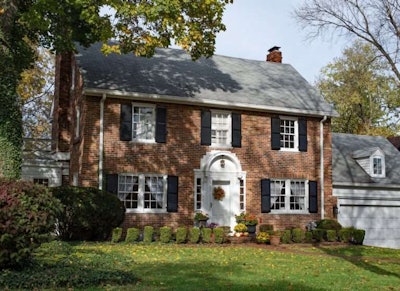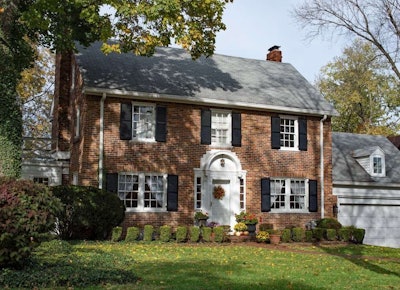
 Computer models devised by the U.S. Department of Energy show the proper placement of only three trees can save an average household between $100 and $250 in energy costs annually.
Computer models devised by the U.S. Department of Energy show the proper placement of only three trees can save an average household between $100 and $250 in energy costs annually.Money doesn’t grow on trees, but, when placed strategically, trees can save your clients money by lowering their energy bills.
Trees aren’t the only landscaping elements that are able to provide energy savings. Shrubs, vines, groundcovers and turf grass all have their uses as well.
According to the Cornell University Cooperative Extension Rockland County, a well-planned landscape designed for energy efficiency can reduce heating and cooling costs by 10 to 30 percent.
When designing an energy efficient landscape, the first step is to conduct a site analysis of the property. The direction the house faces, the location of nearby structures and whether the home is on a slope are just some of the factors that must be considered.
Wind directions will vary and gradual slopes can increase wind speeds by 20 percent. The plants that are chosen need to be beneficial during both the summer and the winter.
“While summer shade is desired to reduce cooling expenses, we also want to maximize the winter sun,” Oklahoma State University Cooperative Extension horticulturist David Hillock told the High Plains Journal. “To get the best of both worlds requires careful tree selection. Shade is good in the summer but can block the warming rays of the sun in the winter months.”
The ideal deciduous trees to use are ones with high branches that can block out the sun in the summer but have an open canopy allowing sunlight to come through during the winter. Trees that are shading the house should be placed on the east, south and west sides, as these walls receive the greatest amount of heat.
Large shade trees should be planted 15 to 20 feet away from the house while smaller trees shading windows can be planted 12 to 15 feet away.
Vines can be trained to grow up the south side of a home or on a trellis, where they will absorb and reflect the summer heat. Some take longer to grow, so annual vines like mandevilla and moon vines can be used for quicker summer coverage.
Evergreen trees generally shouldn’t be used for shade because their cone shape isn’t as effective in blocking the sun during the summer, and their lower level foliage can prevent the sun from warming the house in the winter.
Groundcovers and grass can also keep temperatures lower than impervious surfaces such as driveways and patios.
In the winter, an energy-efficient landscape is able to insulate a house and provide windbreaks that keep the home from losing heat on a blustery day.
Windbreaks can reduce wind speed and deflect it from infiltrating the house. Unlike solid barriers, windbreaks composed of plants allow for some penetration, preventing a vacuum from forming on the downwind side.
Effective windbreaks are generally placed on the north and northwest side of the home, as this is where prevailing winter winds come from. Pines and other evergreens layered with shrubs of varying heights and foliage density are ideal.
A windbreak should extend 50 feet beyond each corner of the area it is protecting if space is available. These dense evergreen plantings can also be used as snow fences if the home has a problem with snow drifts.
A minimum of two rows of evergreens placed 100 feet windward of the problem area can prevent snow from piling up around a house.
Foundational plantings also help out with energy conservation in both summer and winter. A dense group of evergreen shrubs can guard against the wind and create a “dead air” space which slows the escape of heat from a building.
The dead air space in the summer insulates the home from the hot air outside. Foundational plantings should have at least a foot of space between the home and the plant’s mature size.
Energy-efficient landscaping will save money in time, but it is important to understand that trees and shrubs are an investment and need to be properly planted and cared for before they can reach their full potential.
Trees with a slow to moderate growth rate may not provide shade instantly, but they will be able to live far longer and survive far more storms.










